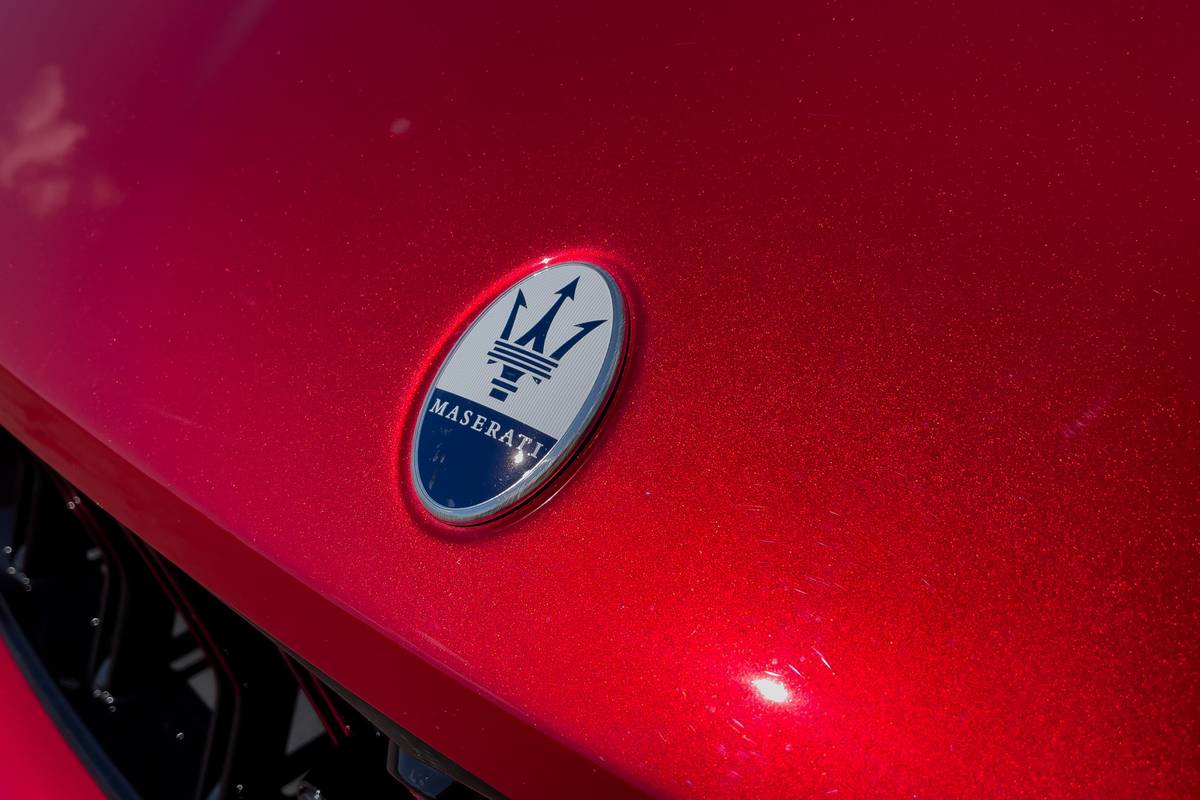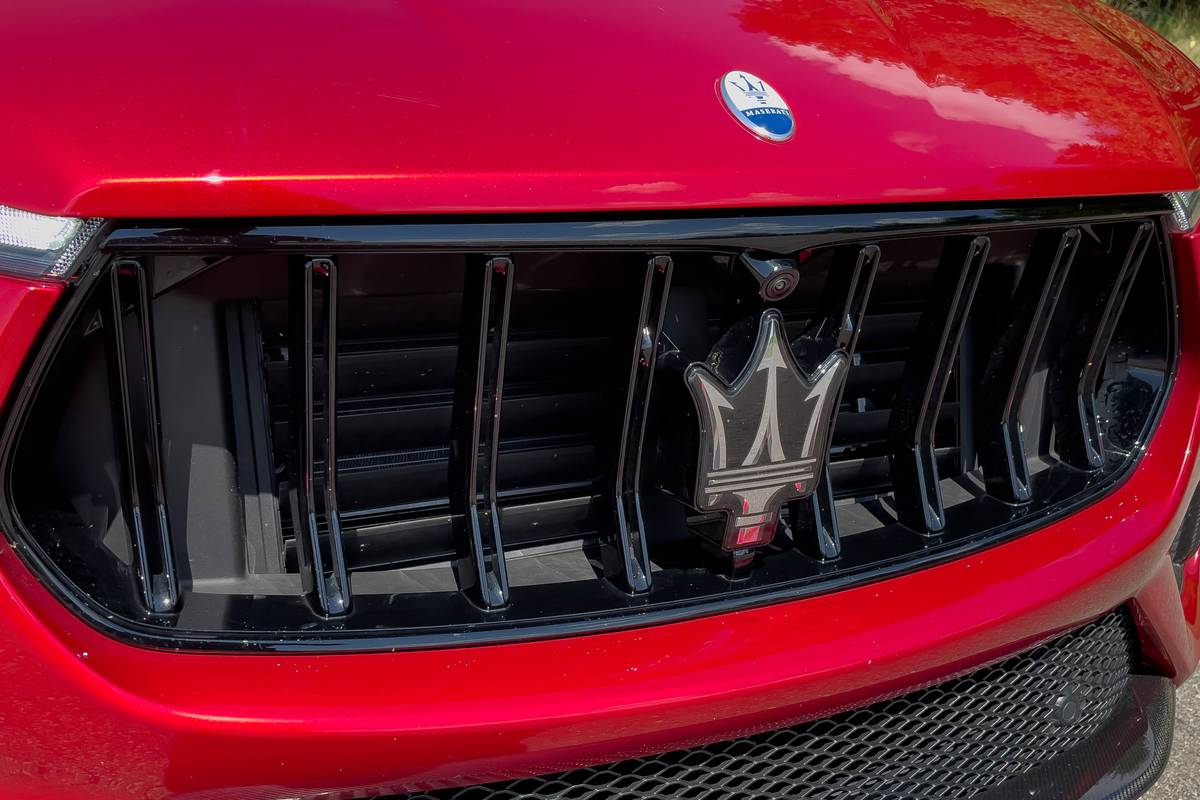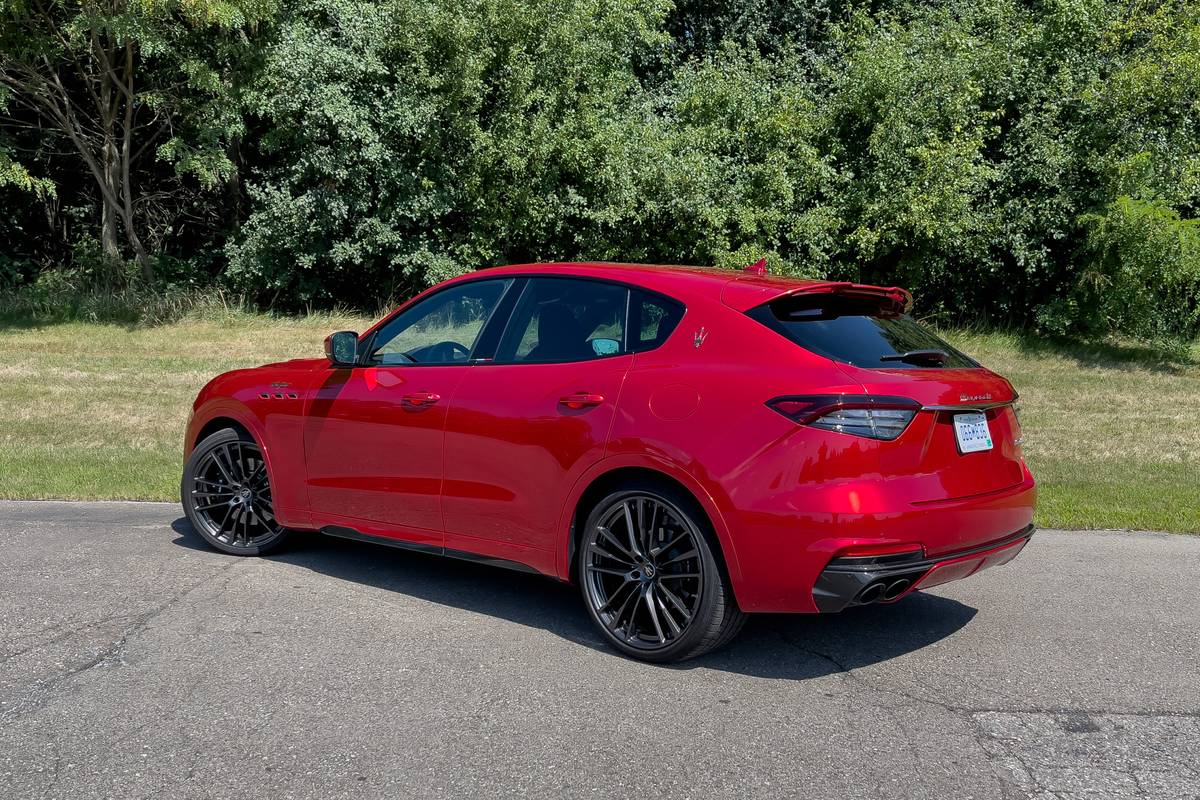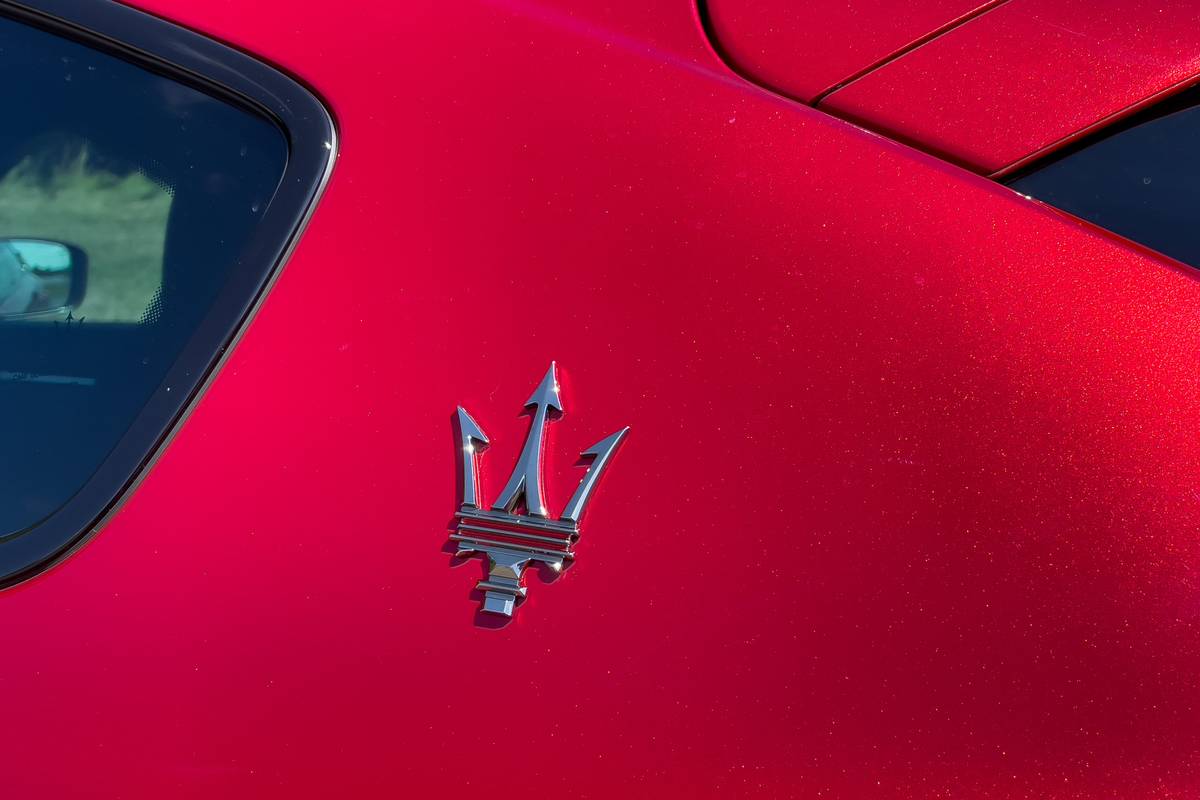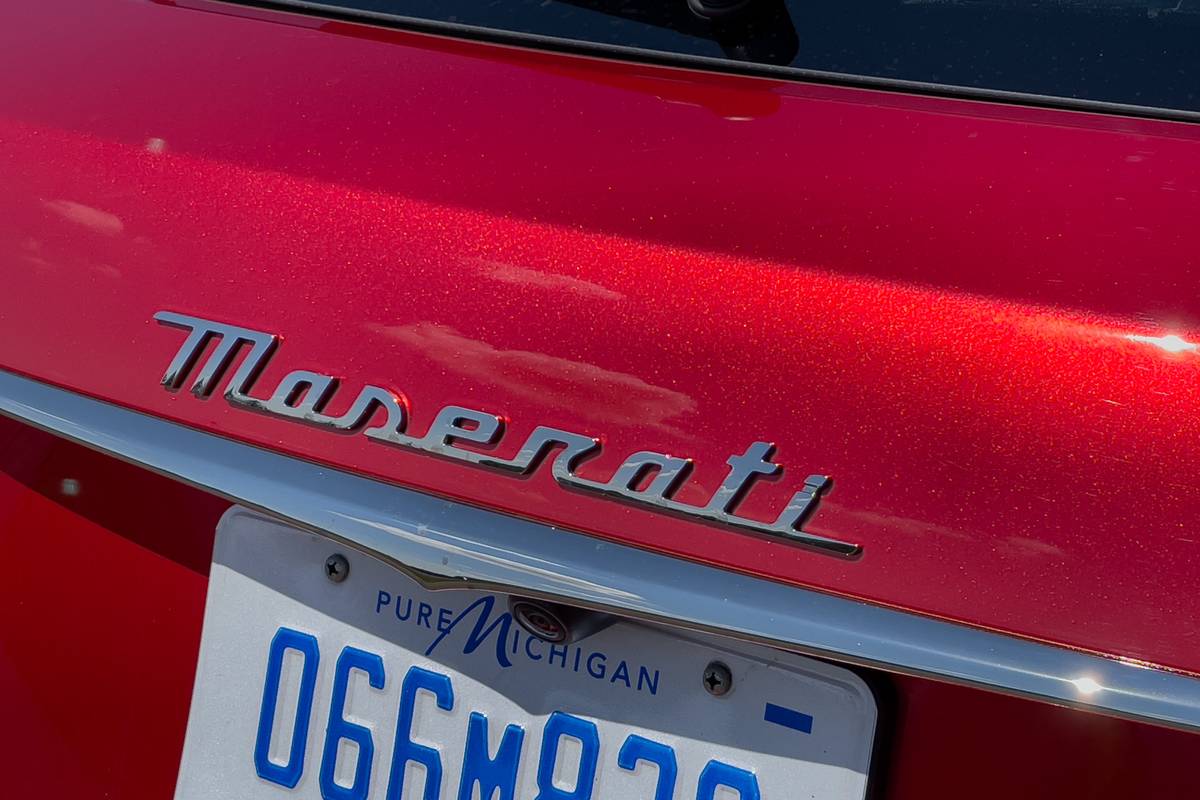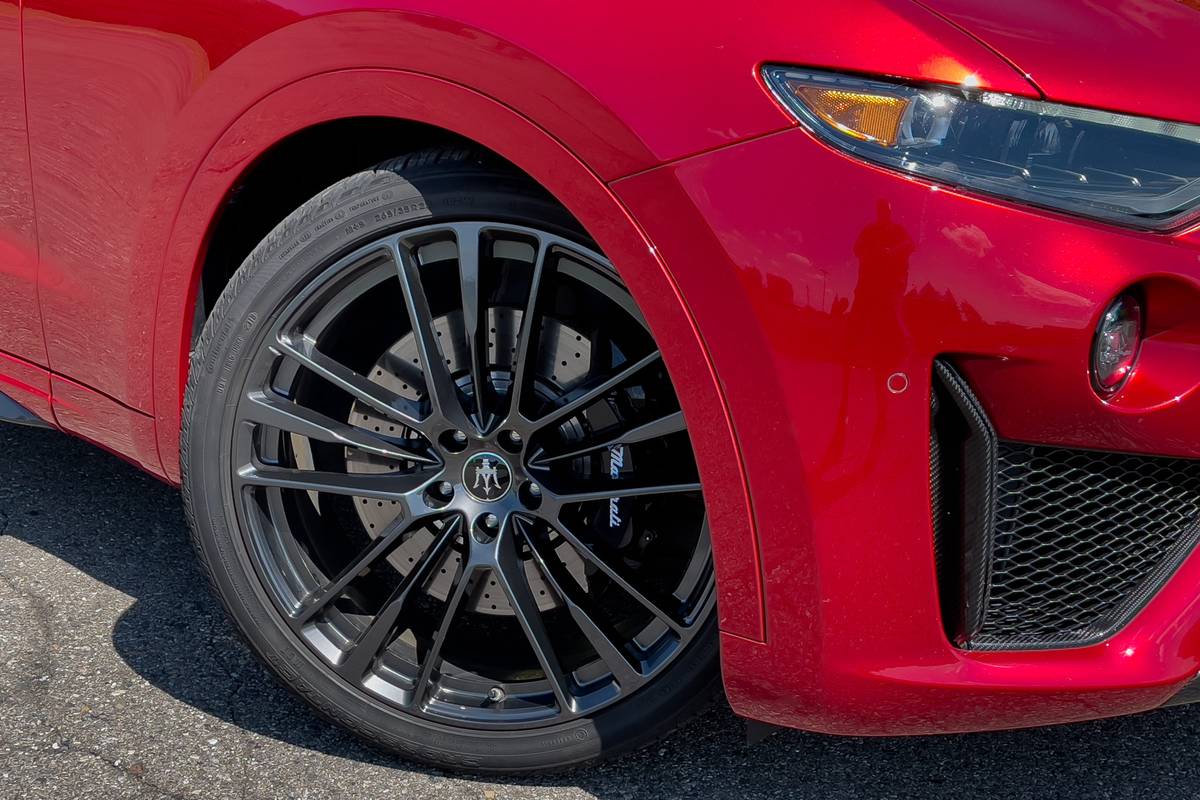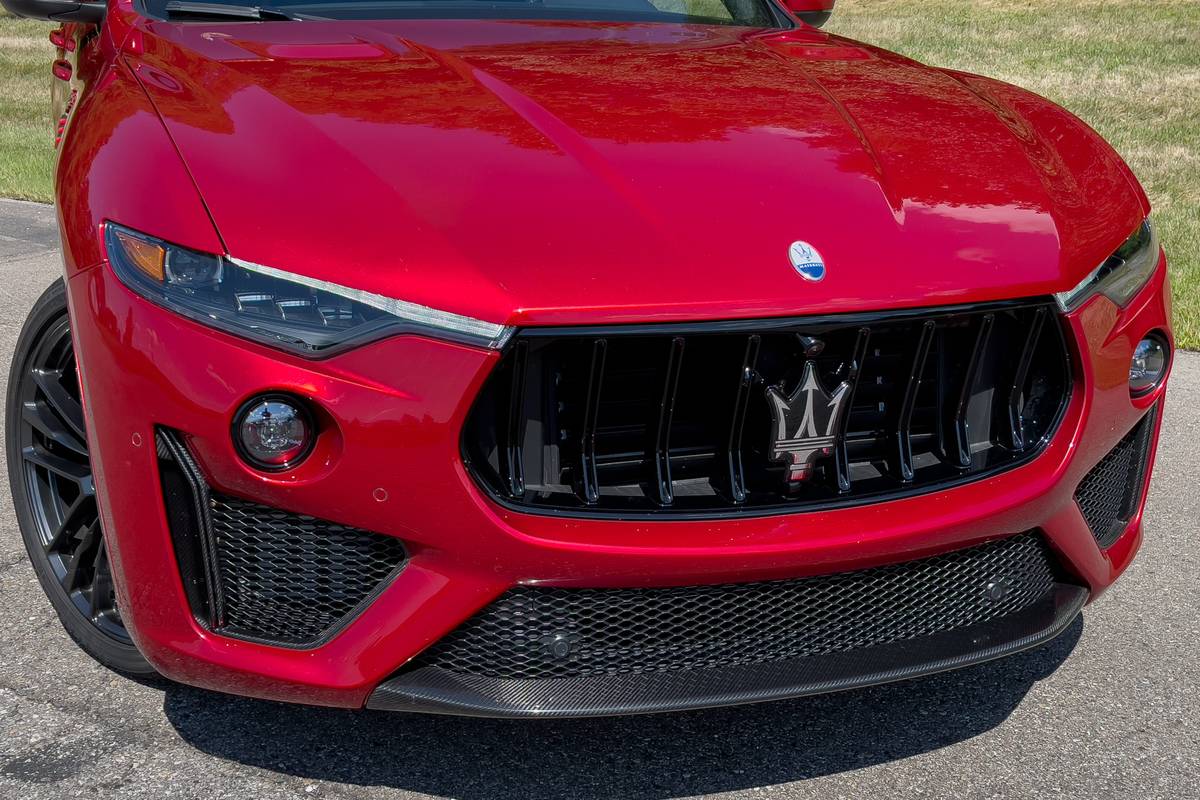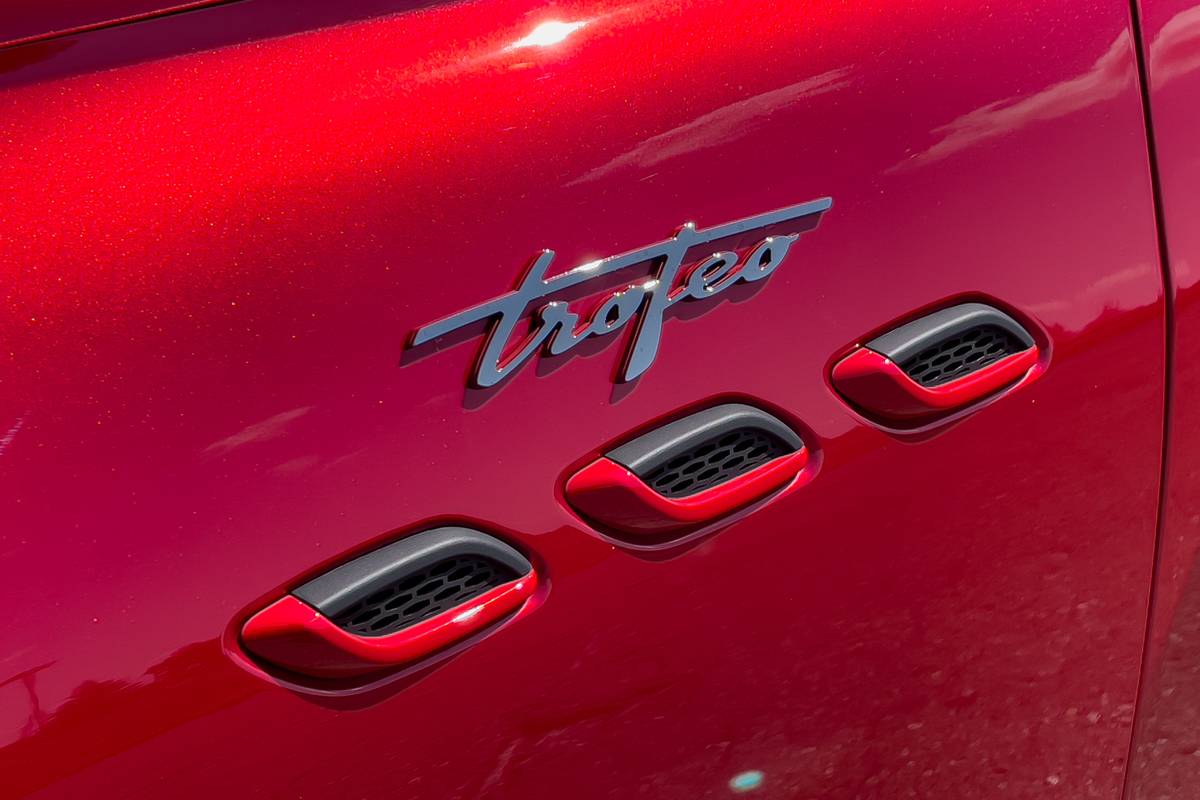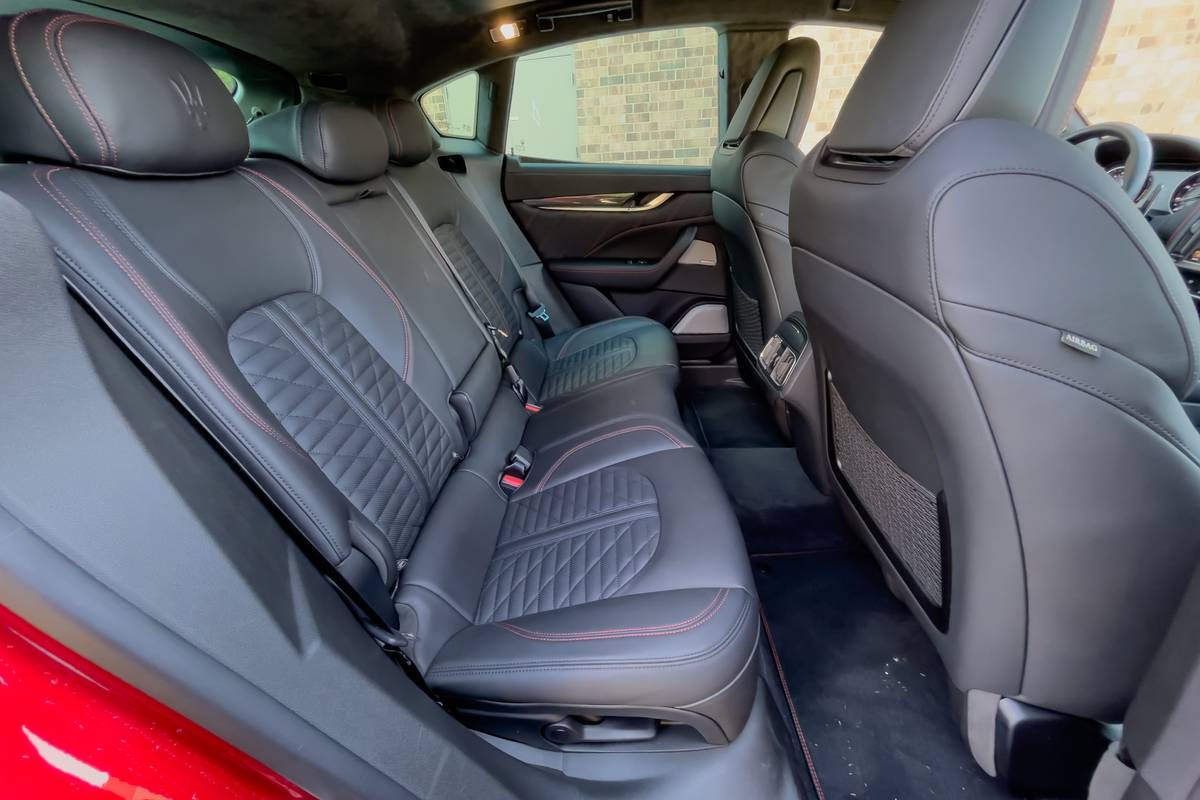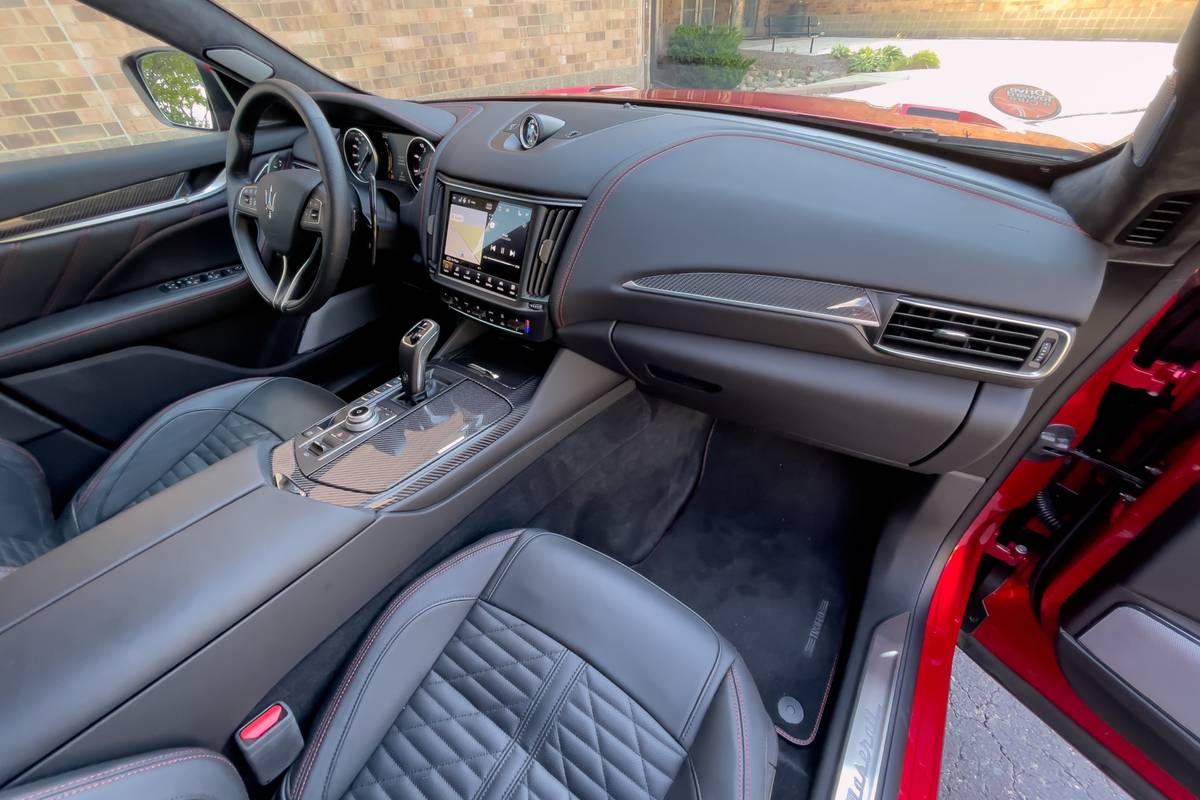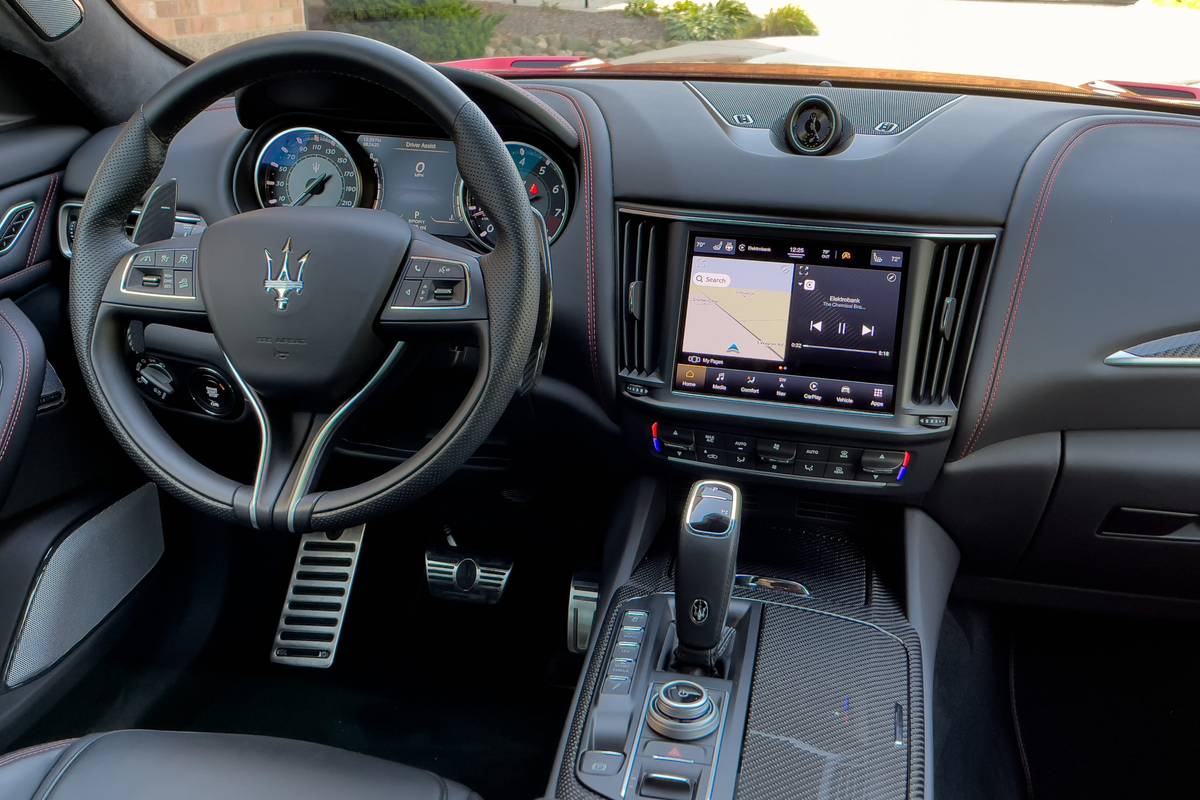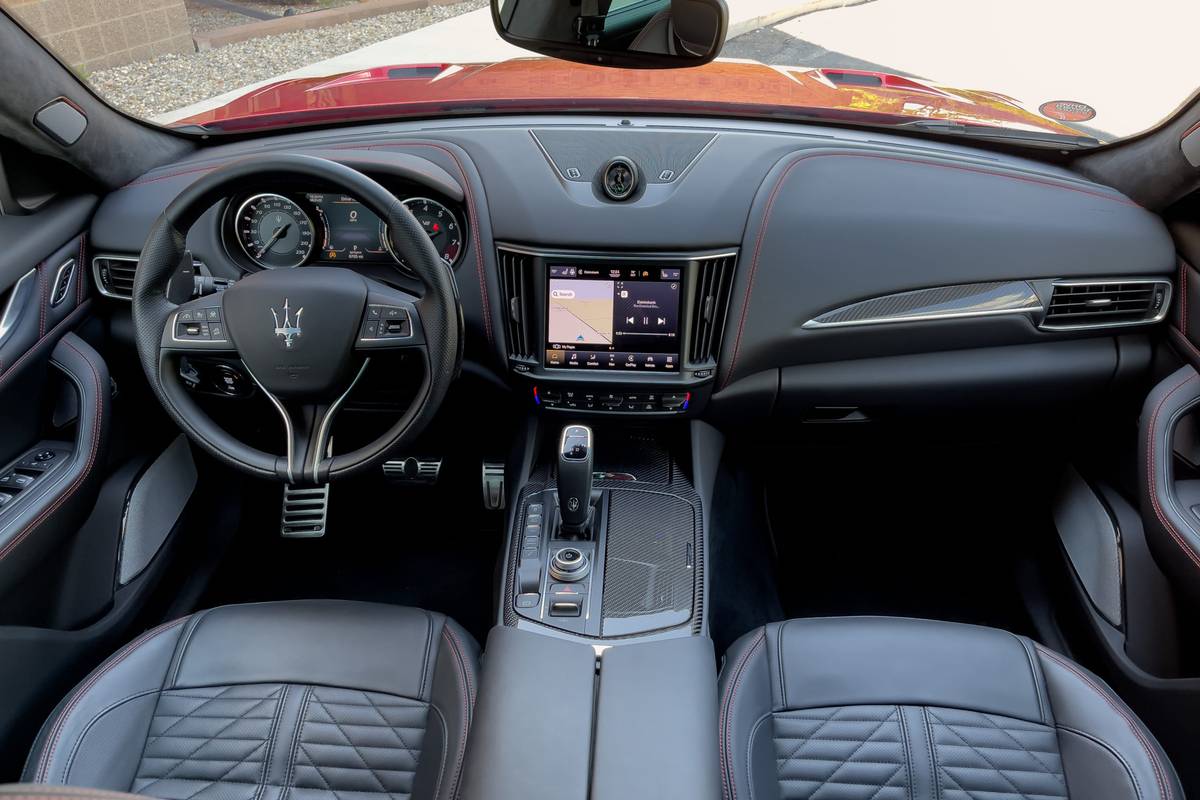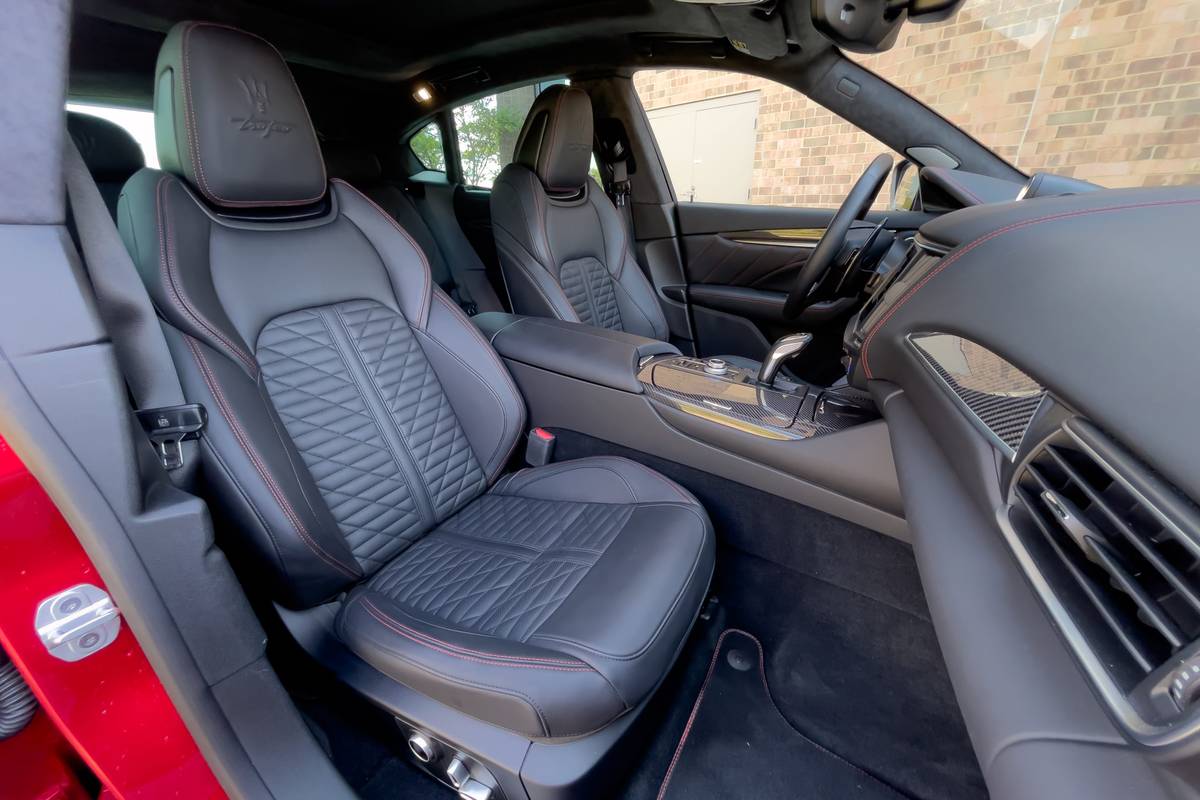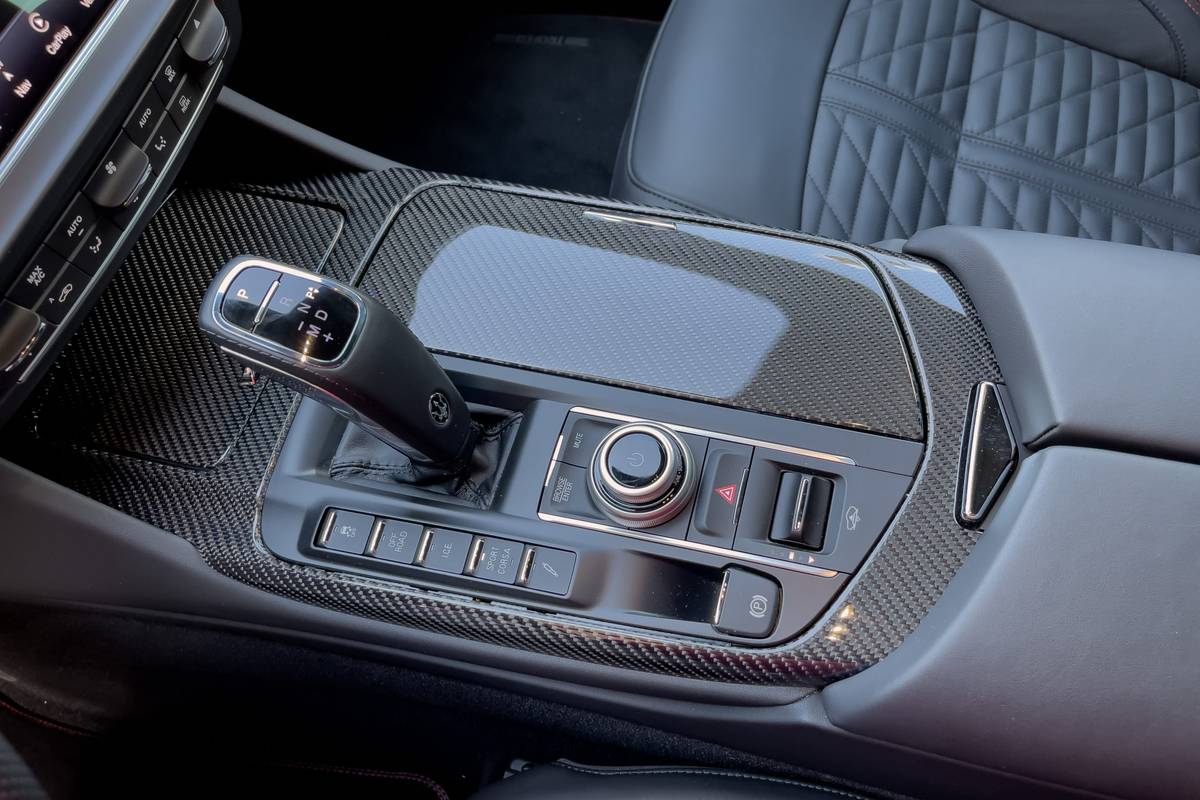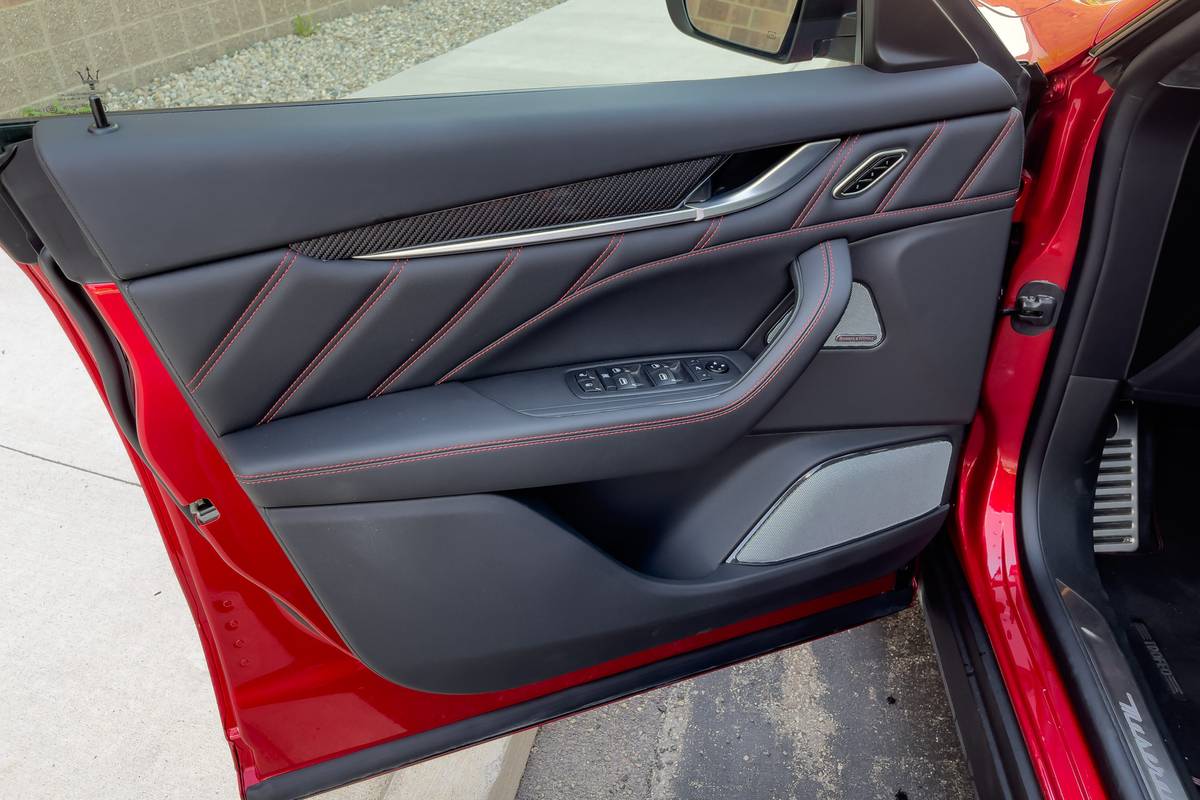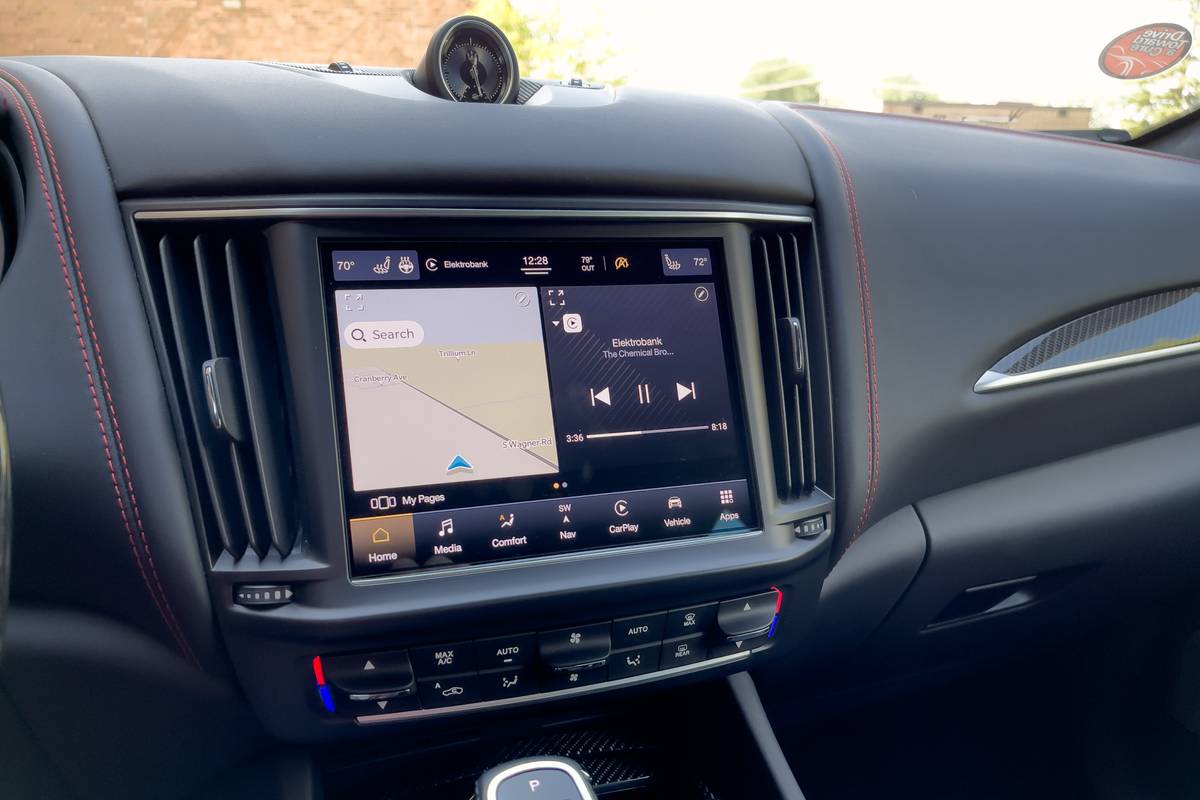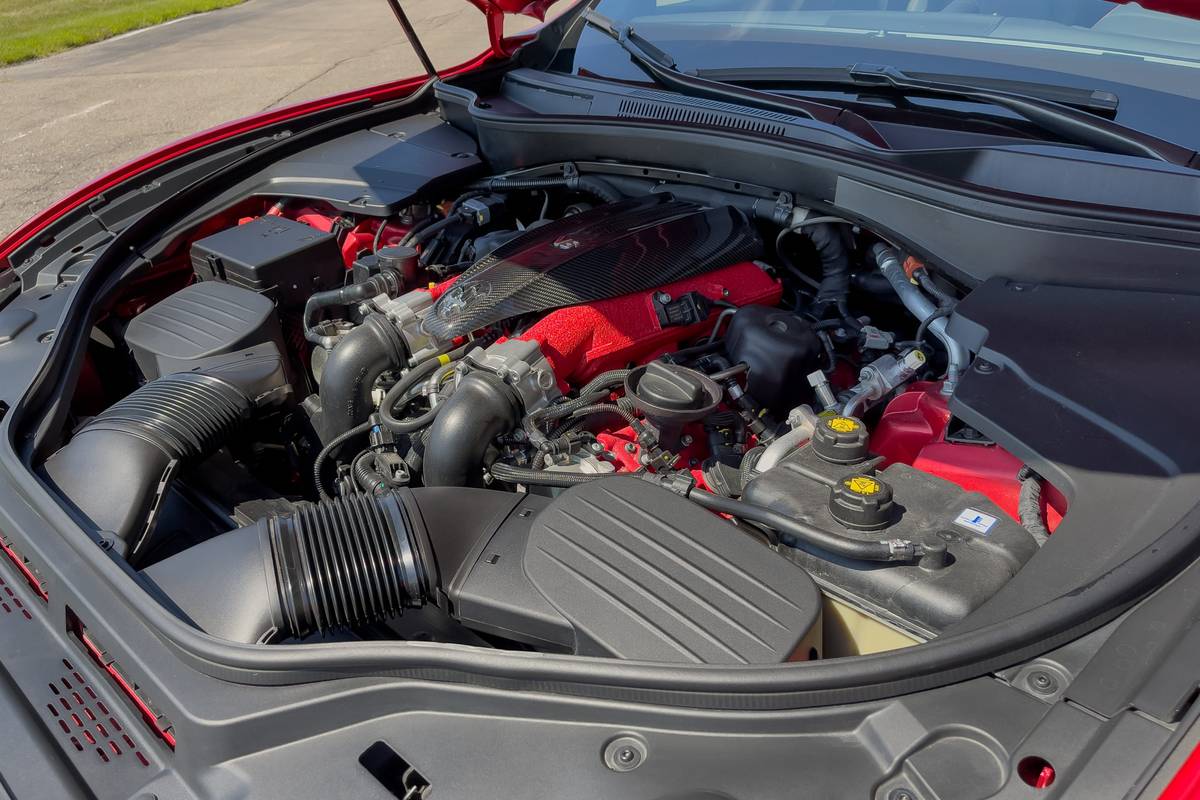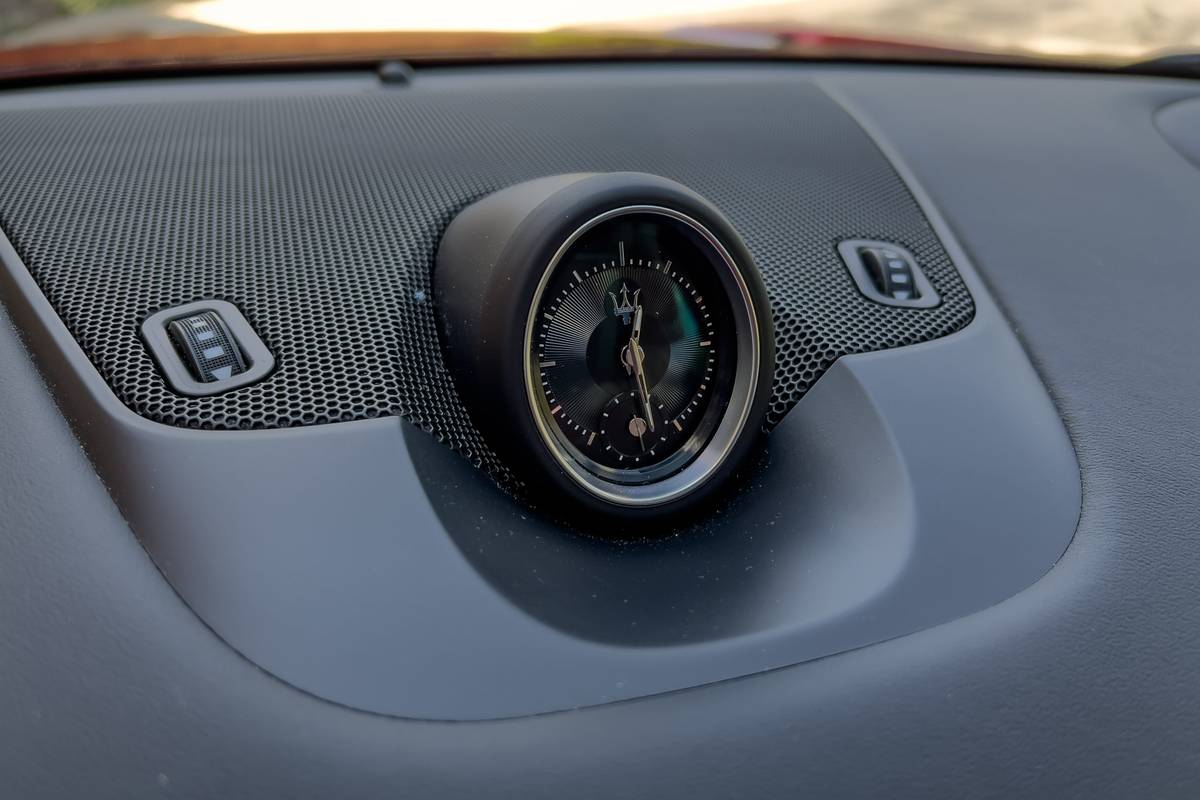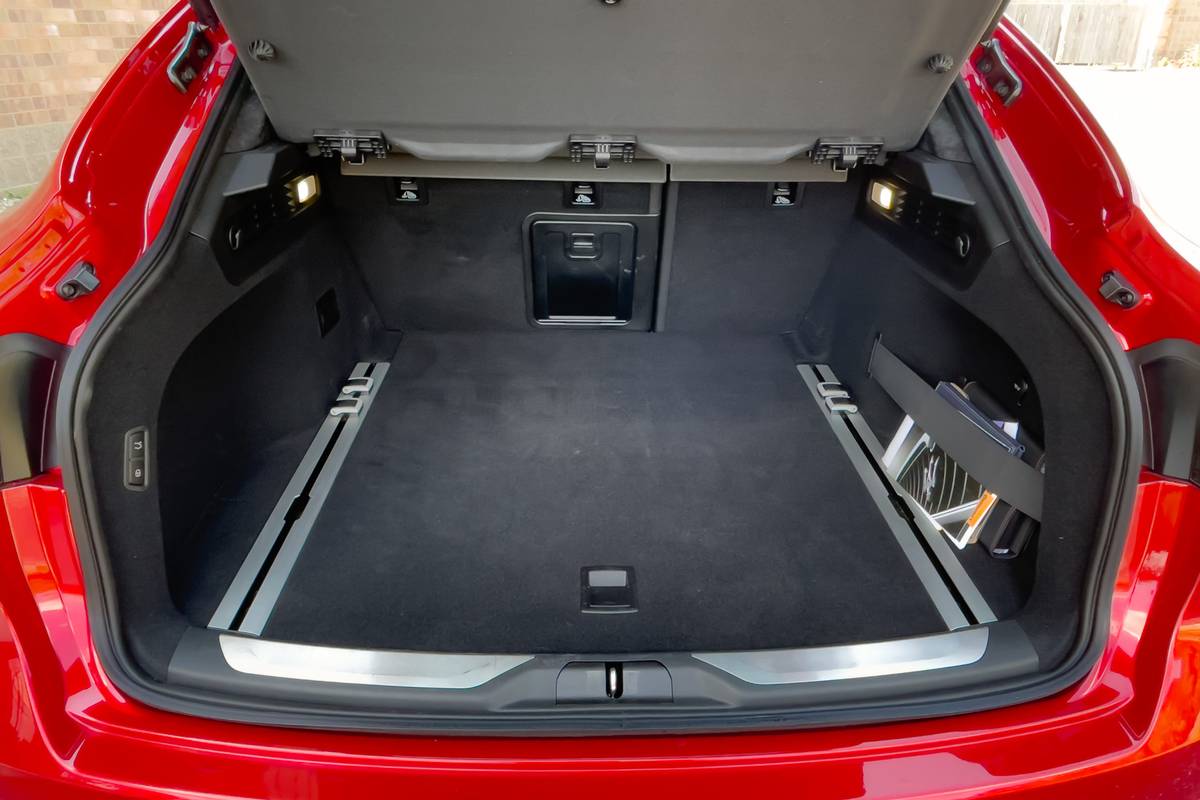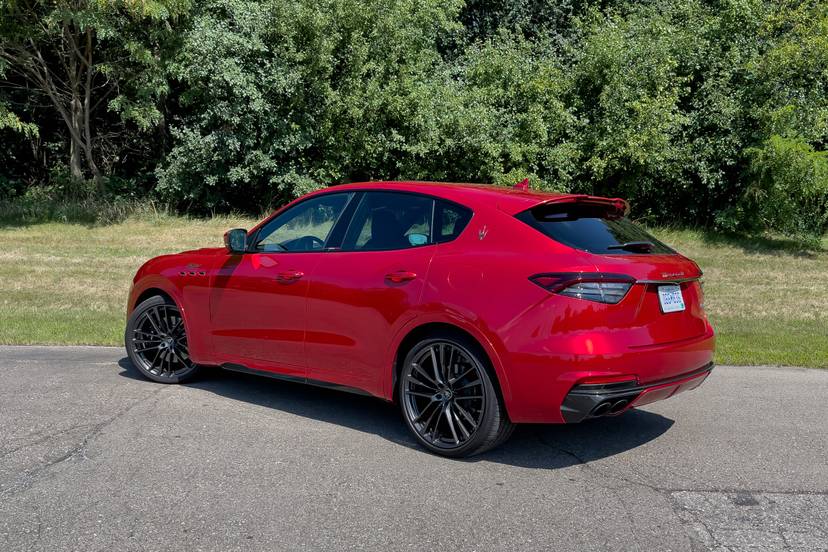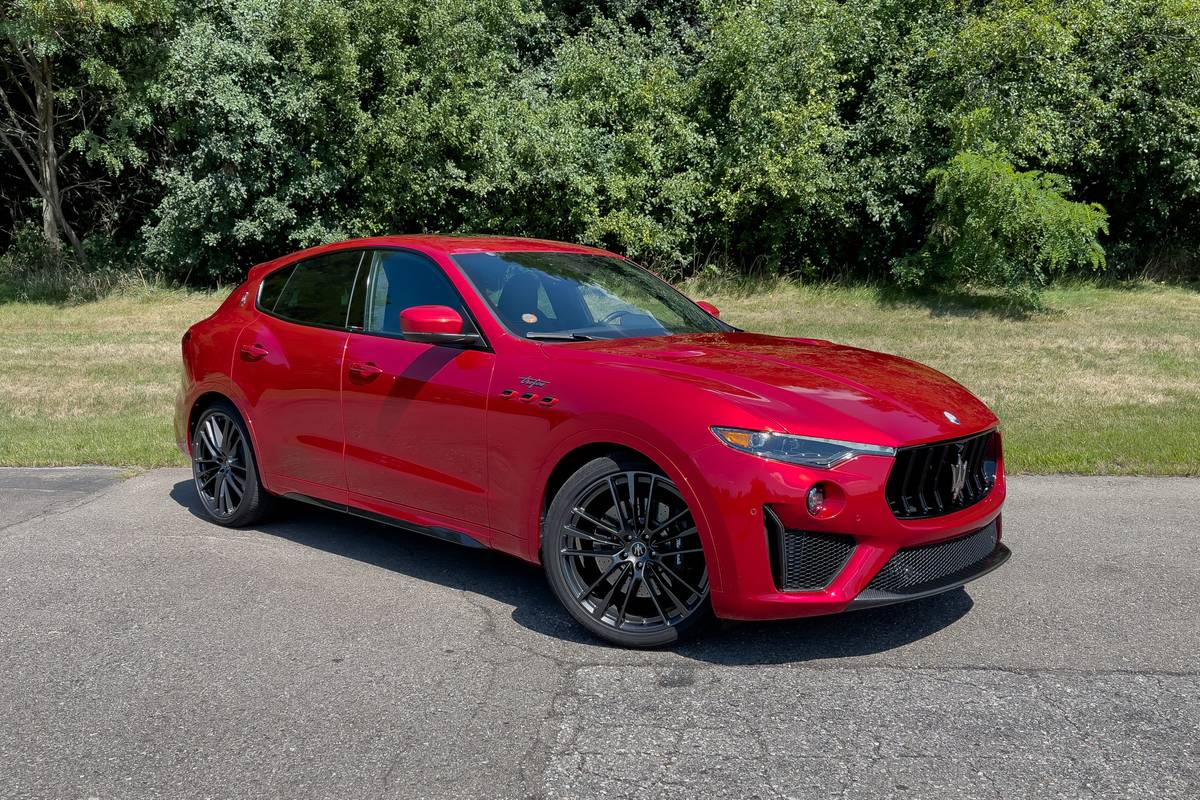
The verdict: Beautiful, quick and fun to drive, the Maserati Levante Trofeo is an interesting, if imperfect, alternative to more mainstream super-luxury SUVs.
Versus the competition: In its top Trofeo spec, the Levante is a lot more expensive than a comparable Porsche Cayenne or BMW X5 M, but you won’t see another one coming and going at your golf club dinners.
If you’re shopping for a super-expensive luxury SUV, there’s a plethora of choices and flavors; it seems nearly every luxury brand has one of these high-powered, multipassenger luxo-barges. There’s the BMW X5 M, the Mercedes-AMG GLE63, several spice levels of the Porsche Cayenne, Land Rover’s Range Rover Sport, and Audi will happily sell you a hot new RS Q8. All of these SUVs can be optioned up to high levels of horsepower and fitted with opulent interiors, and all tend to rack up some nice profits for the luxury players.
You may notice, however, that these SUVs are almost entirely German or British; the Japanese luxury brands don’t have anything comparable, nor do the Americans. But what about the Italians? Shouldn’t a nation known for swanky luxury goods, high style-consciousness and blisteringly fast sports cars have something comparable? Well, it does: the Maserati Levante, tested here in its top-spec Trofeo trim. Short of a Ferrari Purosangue, this is the most luxurious, most capable Italian SUV out there. But is it any good? I drove one for a week to find out if this stylish road rocket — from a storied brand with decades of history — can keep up with its better-known, better-selling competitors.
Related: 2023 Maserati Grecale Breezes in With Up to 523 Horsepower, EV Model Is Next
Gorgeous, But Getting Too Familiar?
What’s immediately striking about the Levante is that like most Italian supermodels, it doesn’t have a bad angle. The thing is gorgeous from front to back, from its aggressively deep, straked grille and feline headlights to its pronounced rear fender haunches and quad exhaust tips poking out from below the rear bumper hinting at what’s under the hood. My only complaint is that it’s a look becoming a bit too familiar, as Mazda has pretty much co-opted the same style for its newest SUVs. (Tell me you don’t see the Mazda CX-50 in this Maserati’s front end.) If you were to scale up Alfa Romeo’s Stelvio SUV, you’d see it has basically the same shape and body — unsurprising given Alfa Romeo, like Maserati, is part of the Stellantis family of brands. The new Maserati Grecale, a smaller compact SUV that slots below the Levante (and shares a platform with the Stelvio), is a bit more differentiated. Given the Levante has a few years on it now — it was first introduced in concept form as the Kubang in 2011 — a restyling is likely in the next few years.
No matter; imitation is the sincerest form of flattery, and the fact that other brands are aping the look of the Levante and other Maseratis is high and worthy praise. The Levante may have a traditional two-box design, but it’s muscular, sleek and has details like “vent ports” on its front fenders designed to make it feel aggressive and powerful even if it’s just rolling through a Taco Bell drive-through.
The Trofeo I drove was outfitted with black-painted 22-inch wheels and tires that filled out the wheel wells nicely. The options list included glowing Rosso Magma red paint that, for literally $17,000, should have had a lot less orange peel in the finish than it did. Not great, that. Given the overall price of the Maserati Levante Trofeo (more about that in a moment), the paint should be flawless and the interior should be a luxurious knockout.
Too Much Stellantis Inside?
Step into the Levante’s cabin and you’re greeted by two competing schools of thought. First, shapes and materials in a car like this should be exotic, top quality and impressive. Second, as one of more than a dozen brands under Stellantis’ huge umbrella, Maserati is bound to do a fair bit of parts sharing. The first one is only moderately well executed: Yes, there’s some really beautiful quilted leather, a lovely faux-suede Alcantara headliner, and some racy shapes and designs that imply luxury. The gauges — actual round dials, not just a big digital screen — are beautiful to behold, and all of the dash and door leather is stitched straight and true. But there’s also an unpleasant amount of cheap-looking carbon-fiber trim, which stopped feeling upscale the minute it appeared in an average Kia many moons ago.
The other idea — that parts sharing is bound to happen — is proved in the buttons, switches and screens that adorn the Levante’s interior. The stalks and window controls are straight out of a Jeep Grand Cherokee, as are the climate-control buttons. I posit, however, that this isn’t really a bad thing; the switches feel just fine, and the likelihood of anyone cross-shopping a six-figure Maserati and a Grand Cherokee are remote enough to make this detail unimportant. As long as the controls look and feel suitably expensive (and they do), who cares what other vehicles they appear in? Especially if customers are never going to see them anyway.
Another good example of this is the Levante’s 8.4-inch touchscreen, which runs a Maserati-themed version of Stellantis’ ubiquitous Uconnect multimedia system. It’s still one of the best, easiest to use, most clearly presented and quickly functional multimedia systems on the planet. Tarting it up with Maseratiness works just fine.
Comfort and visibility, however, are another matter. The front seats are dynamite — supportive and fantastic-looking — but they’re not overly bolstered. Their leather pattern just oozes Italian tradition; the central horizontal stitch pattern has appeared in Ferraris for some 60 years now, and it looks just as good here as it does there. The backseat features adequate legroom and headroom, but there’s also an odd seat-bolster shape that puts a strange padded section right on the tailbone of anyone sitting back there. It makes for a decidedly uncomfortable lump in one’s lower back; my backseat passengers complained about it immediately. If they’d been back there for anything more than a quick jaunt to dinner, it would have been a serious issue.
Also coming up a bit short in the Levante is manufacturer-estimated cargo room, which checks in at just a smidge more than 20 cubic feet. That’s well short of what competitors from BMW, Mercedes-Benz and Porsche offer. It likely has something to do with the SUV’s rather high load floor, but if carrying either lots of people or cargo is something you’ll need to do with your high-performance SUV, you’ll be better served elsewhere. The Levante takes care of whomever’s sitting up front, but anyone in the back (and their stuff in the cargo area) will not be looked after as well.
That’s OK, the Point Is to Entertain You
Since when have comfort and utility been reasons to buy a luxury anything? It’s always better to look good than to feel good, right? Well, you will indeed look good in a Maserati Levante Trofeo, and as long as you’re in the driver’s seat, you’re going to feel pretty good, too. At the very least, you’re going to find yourself massively entertained because this SUV is made to move.
It starts with the same Ferrari-built twin-turbocharged 3.8-liter V-8 engine that’s under the hood of other Trofeo-trim Maseratis, including the Ghibli and Quattroporte sedans. In the Levante Trofeo, it makes 580 horsepower and 538 pounds-feet of torque, with power sent to all four wheels through standard full-time all-wheel drive and an eight-speed automatic transmission. It makes the kinds of noise you’d imagine a compact, high-strung Italian V-8 would make — and it makes even more of it when you adjust the drive mode from Strada (Street) to Corsa (Race). Acceleration is fierce, but the suspension is soft enough to allow the rear to squat some when you punch it, making it feel even quicker than Maserati advertises (0-60 mph in 3.8 seconds, it says). The transmission is beautifully matched to the V-8, never second-guessing or finding itself in the wrong gear. You can shift it yourself with Maserati’s huge fixed-position flappy-paddle shifters behind the steering wheel, but I felt no need to do so.
I’ve never been a big fan of the idea of a high-performance SUV; I’ve thought of them as overpowered, oddly tuned status symbols meant to part rich folks from their money and unlikely to see a racetrack or even be driven athletically. The Levante Trofeo falls into this category (having a “race” mode on any five-seat family SUV is pretty ridiculous regardless of powertrain), but of all the examples I’ve driven, the Levante is one of the more entertaining — likely because it doesn’t feel as tall as many other SUVs. A lower center of gravity and seating position help it feel more like a Quattroporte wagon than a tall-riding SUV, and that comes through in its demeanor. The Levante turns with the same skillfulness as it goes straight, with flat, beautifully controlled body motions augmented by the excellent feel and feedback you get through the steering wheel. It feels athletic, urging you to take corners faster and get on the gas more forcefully — to actually enjoy your commute or carpool duties. The suspension is tuned quite well, too, with a “Skyhook” air suspension that’s adjustable for firmness depending on drive mode. It soaks up bumps nicely, never really upsetting the cabin even on rough pavement.
The only area not quite up to snuff athletically are the brakes, which are a bit soft and mushy, making for stops that can be jerky and less smooth than one would like. And why on Earth is there an off-road mode? Between the Levante’s lack of underbody protection, its sticky high-performance all-season tires on big wheels and an utter lack of all-terrain pretense, I doubt any Levante will be challenged by anything more than a gravel path to an equestrian center.
A Quirky Alternative to the Mainstream
What we’re left with in the Levante is a stylish, genuinely athletic and fun-to-drive Italian-fashioned SUV that needs an interior upgrade to truly match its asking price. Like most of its competitors, the Levante has a massive price spread: In the U.S., a base 2023 GT trim level with a 345-hp V-6 starts around $92,000 (all prices include destination). The slightly nicer Modena model comes in about $10,000 more, the V-8-powered Modena S rings in around $129,000, and the top Trofeo model starts at nearly $169,000. The 2022 Trofeo I tested started lower, but with every option available it rang in at $173,550 — considerably more than you’d pay for competing vehicles with more customization and technology options.
You have to really put some stock in the Maserati name to pay that kind of money for a Levante, and I’m not sure the brand has that level of cachet these days. The addition of new models like the MC20 and MC20 Cielo sports cars, plus the upcoming GranTurismo Folgore all-electric coupe, should go a long way toward reenergizing the Maserati brand, as may its vehicle customization program. Until then, the Levante Trofeo remains a flawed, fun, expensive luxury SUV that brings a little Italian style into an otherwise heavily German segment.
More From Cars.com:
- 2024 Maserati GranTurismo: Amore, Now With Fewer Cylinders
- What Is Stellantis?
- Research the 2023 Maserati Levante
- Research SUVs
- Shop for a New Maserati Levante
Related Video:
We cannot generate a video preview.
Cars.com’s Editorial department is your source for automotive news and reviews. In line with Cars.com’s long-standing ethics policy, editors and reviewers don’t accept gifts or free trips from automakers. The Editorial department is independent of Cars.com’s advertising, sales and sponsored content departments.





































